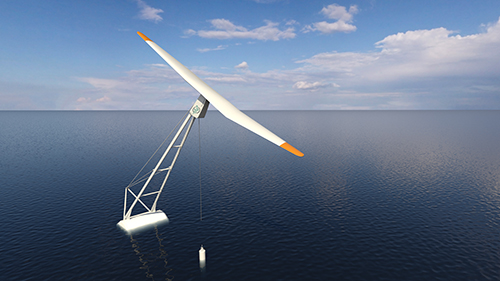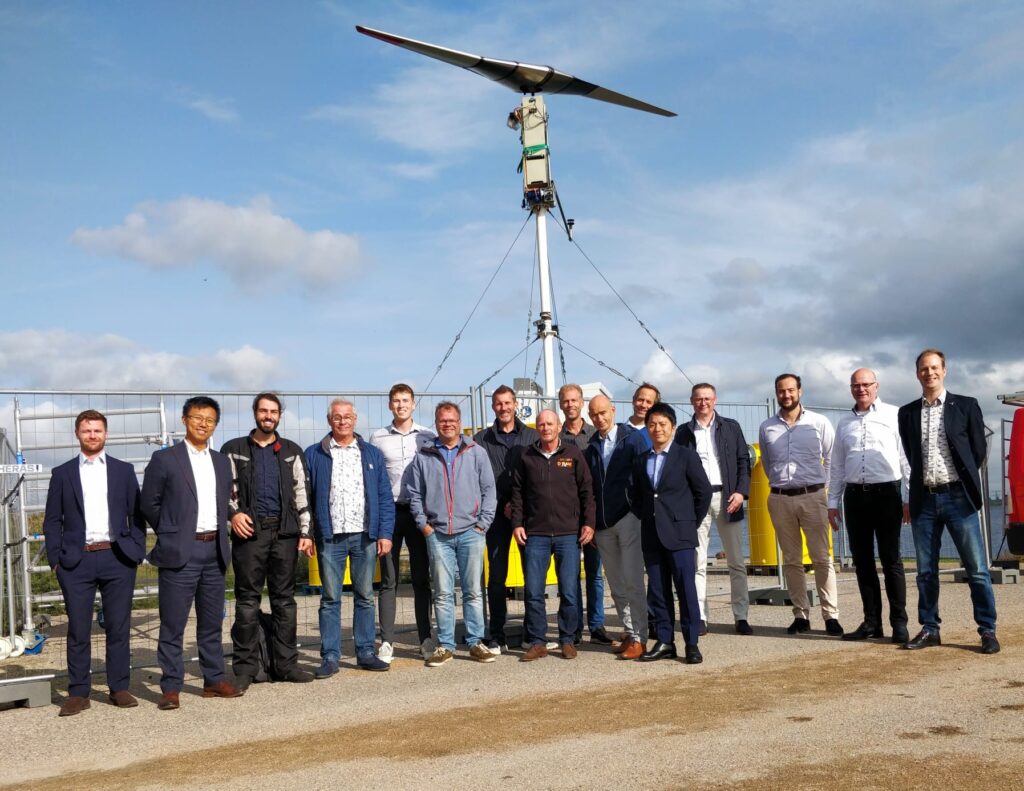Wind Energy – Demonstration Project
An international consortium of six parties has started a research & demonstration project into positive wake effects of wind turbines with tilted rotors.

Dutch floating wind technology developer TouchWind, who is developing the tilting-angled one-piece rotor floating wind turbine, took the initiative for the so-called POWER project.
The other consortium members are Japanese shipping company Mitsui O.S.K. Lines (MOL), research organisation TNO, maritime research institute MARIN, producer of electric motors & drives Nidec, and rotor blade specialist We4ce.
POWER, which is an abbreviation of ‘POsitive Wake Effects of turbines with tilted Rotors’, aims to demonstrate that the costs of offshore wind production can be significantly lowered by increasing the energy capture in offshore wind farms.
The ‘wake effect’ in wind energy occurs when a wind turbine interacts with the wind, causing the airflow behind the wind turbine to have reduced speed, thus lower energy content, and increased turbulence. This (negatively) affects the performance of the next turbines in line in terms of efficiency and power production.
The Dutch government wishes to accelerate wind energy deployment and cluster wind farms as much as possible to leave contiguous space for other purposes at sea.
The POWER project perfectly fits with this goal to increase wind power yield and limit space, by exploring whether turbines with tilted rotors can be positioned closer to each other without reducing their energy capture and increasing the wind energy production per km2.

For its research and demonstration program, the POWER project has received funding from RVO, the Netherlands Enterprise Agency.
The first specific goal of the POWER project is to investigate the reduction of wake losses by deflecting the wake using turbines with tilted rotors. A second goal is to investigate and validate that turbines with tilted rotors can be used to ‘pull’ more wind from upper air layers into a wind farm and create a positive effect. Combining these effects would allow for the development of wind farms with a significantly higher power density.
Within the POWER project, ten prototype turbines with tilted rotors of 6m diameter will be developed and built by TouchWind and its partners Nidec and We4Ce. Field testing will be carried out, first on land and subsequently on water.
During the testing program several wind farm layouts in terms of configuration and distance will be evaluated by making use of extensive measurements carried out by TNO and MARIN to validate the concept and numerical models.
